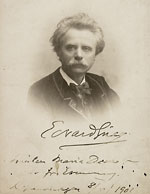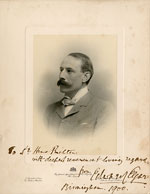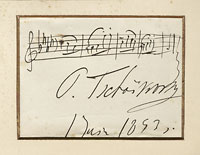Mozart, Beethoven, Tchaikovsky, Gershwin: The Greatest Hits on the Block
In keeping with this issue’s special theme, my selection of auction lots this month is entirely musical. Printed and manuscript music finds its way into all sorts of auctions, though while most salerooms, large and small, will handle such material at one time or another, Sotheby’s in London, who hold regular specialist sales, have a unique place in the classical market.
This material is also very wide ranging, from bundles of sheet music sold on the appeal of the pictorial covers, to medieval manuscripts and autograph scores by the great composers, which is where the big money is usually to be found. This journal’s round-up of 2008’s best sellers at auction, for example, included a group of eight richly illuminated choirbooks of the 1470s at £657,250 ($1,014,000) at Christie’s and the only known autograph manuscript of Chopin’s Tarantella, Op.43, at £409,250 ($802,000) at Sotheby’s. That same year also saw a piece of card on which John Lennon had written out the lyrics to “Give Peace a Chance” sell for £421,250 ($834,000) in a Pop & Rock Memorabilia sale at Christie’s South Kensington!
What follows, however, is a much more topical snapshot of the market. The first section comprises musical items garnered from sales of recent weeks and includes such saleroom favorites as musical quotations and signed or inscribed portraits, as well as both printed and manuscript scores. These are followed by a handful of lots from the specialist music sale to be held on June 9 by Sotheby’s of London, who very kindly supplied me with material before they had even finished cataloguing.
With Kind Regards from Grieg and Elgar
Signed and inscribed photographs of Edvard Grieg, Venator & Hanstein of Köln on March 26, Euros 1,080 ($1,445) and Edward Elgar, International Autograph Auctions of Heathrow on February 13, £3,720 ($5,845)
Inscribed “zur fr. Erinnerung” to a Fraulein Maria Decker, the photo-portrait of Edvard Grieg, signed and dated Copenhagen, 1901, was part of a small music section in this German sale and a good example of its type. In this instance I know nothing of the lady to whom Grieg wished to be remembered, but the identity of the person to whom a photograph was given can have a big financial influence—as indeed it can with signed and inscribed books.
The portrait of Edward Elgar is a good example. Boldly signed and dated Birmingham, 1900, it is inscribed “To Doctor Hans Richter, with deepest reverence & loving regard.” It was the great Austrian conductor, a great admirer of Elgar’s music, who gave the first performance of one of his beloved works, The Dream of Gerontius, at the Birmingham Music Festival on October 3 of that year.
That première, however, was not a success, and as Michael Kennedy wrote in his biography of Elgar, “Not only were the conductor and choir ill-equipped to do justice to a masterpiece; the soloists (if the best then available) were inadequate to their task … Richter’s fault lay in his failure, when he first saw the score, to appreciate its subtlety and the need, therefore, for him to supervise every rehearsal from the start. Elgar did not hold it against him, though he conducted most of his own first performances thenceforward.”
In the 1930s this photograph was passed on by Richter’s son to the consignor’s father whilst he was staying with the Richter family in Bayreuth. It was there, at the Festspielhaus in 1876, that Hans Richer had given an even more challenging première—the first complete performance of Wagner’s Ring Cycle.
Tchaikovsky’s Fourth, “immersed in the past”
Notes from Tchaikovsky’s Fourth Symphony, Bonhams of London on March 23, £6,600 ($9,940)
These four bars are from the oboe melody that opens the second movement of Tchaikovsky’s Symphony no. 4. In the original score it is marked semplice, ma grazioso–simply but graciously–and in a letter to his Russian patron, the symphony’s dedicatee, Nadezhda von Meck, the composer wrote that it was intended to invoke “that melancholy feeling which comes in the evening when, weary from one’s toil, one sits alone … Memories abound. Happy moments when the young blood boiled, and life was satisfying; there are also painful memories, irreconcilable losses. All this is now somewhere far distant. It is both sad, yet somehow sweet to be immersed in the past.”
The quotation is dated June 1, 1893, when Tchaikovsky was in England to collect an honorary degree from Cambridge, and on that very June day he conducted a performance of his Fourth at a Philharmonic Society Concert. As he reported in a letter sent at the time to his brother, Modest, “The unanimous opinion was that the concert went down brilliantly and was a real triumph.” But within a few months his life was over. Whether his death was due to cholera, or, as some have suggested, was a suicide forced on him by the censure of a ‘court of honour’ that could not tolerate his homosexuality, matters not. But the rarity of such an item is extraordinary. Just one other musical quotation by Tchaikovsky appears in published auction records for the past decade and of those that have come to auction, none it seems were for such a major and well-loved work.








 Ian McKay’s weekly column in Antiques Trade Gazette has been running for more than 30 years.
Ian McKay’s weekly column in Antiques Trade Gazette has been running for more than 30 years.


